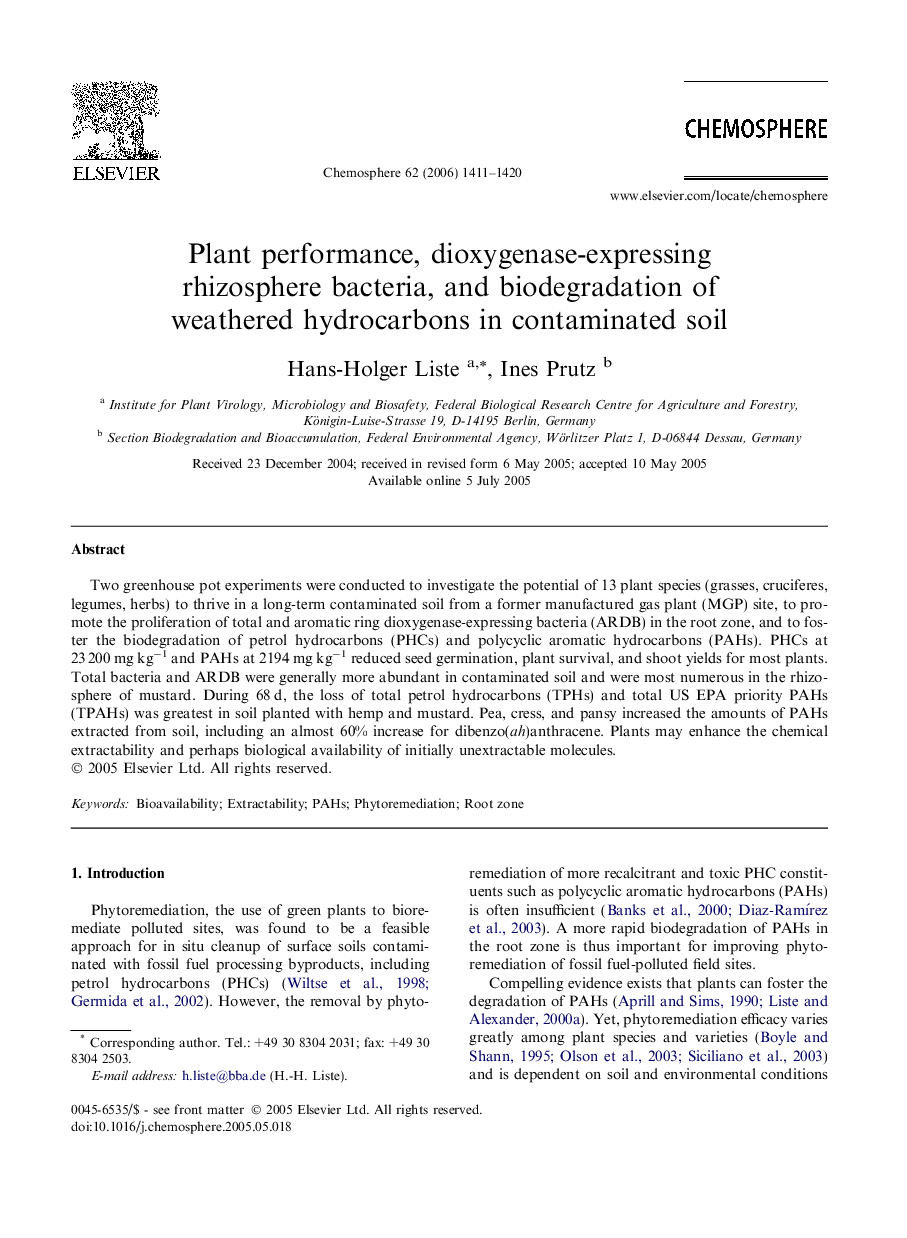| Article ID | Journal | Published Year | Pages | File Type |
|---|---|---|---|---|
| 4415871 | Chemosphere | 2006 | 10 Pages |
Two greenhouse pot experiments were conducted to investigate the potential of 13 plant species (grasses, cruciferes, legumes, herbs) to thrive in a long-term contaminated soil from a former manufactured gas plant (MGP) site, to promote the proliferation of total and aromatic ring dioxygenase-expressing bacteria (ARDB) in the root zone, and to foster the biodegradation of petrol hydrocarbons (PHCs) and polycyclic aromatic hydrocarbons (PAHs). PHCs at 23 200 mg kg−1 and PAHs at 2194 mg kg−1 reduced seed germination, plant survival, and shoot yields for most plants. Total bacteria and ARDB were generally more abundant in contaminated soil and were most numerous in the rhizosphere of mustard. During 68 d, the loss of total petrol hydrocarbons (TPHs) and total US EPA priority PAHs (TPAHs) was greatest in soil planted with hemp and mustard. Pea, cress, and pansy increased the amounts of PAHs extracted from soil, including an almost 60% increase for dibenzo(ah)anthracene. Plants may enhance the chemical extractability and perhaps biological availability of initially unextractable molecules.
